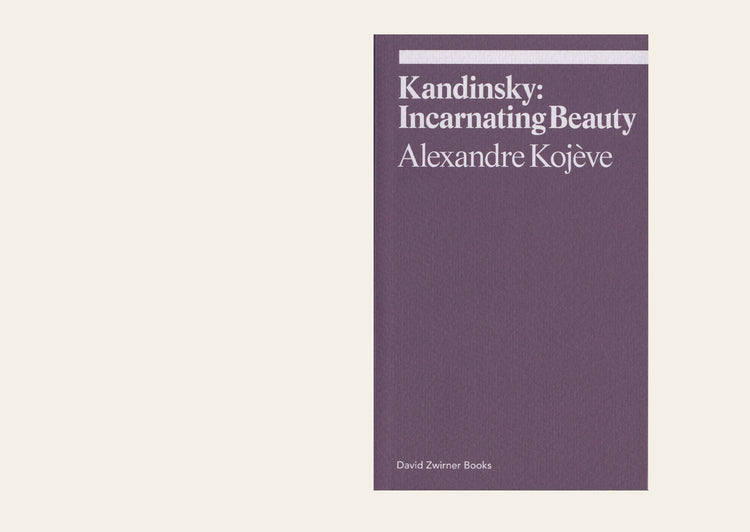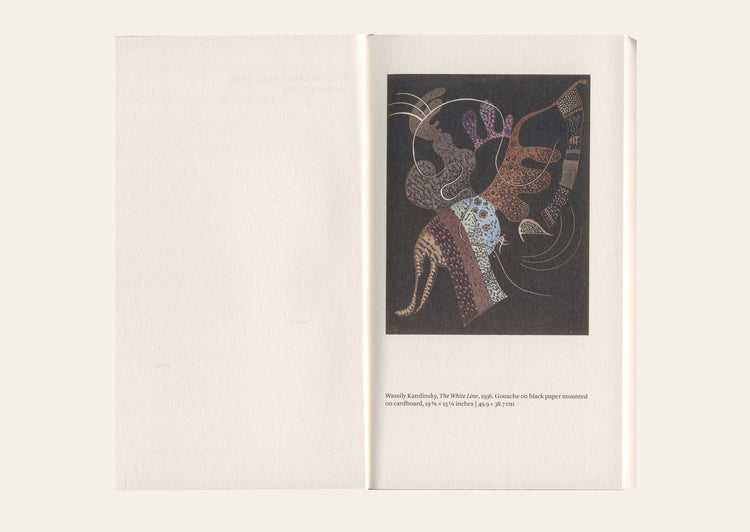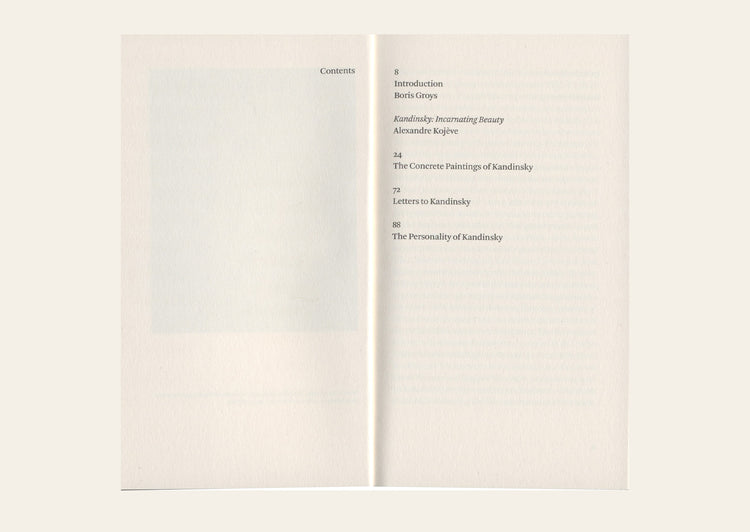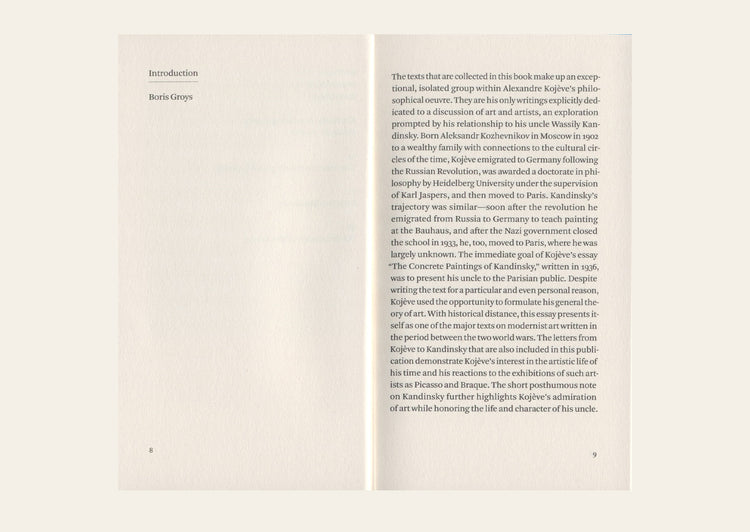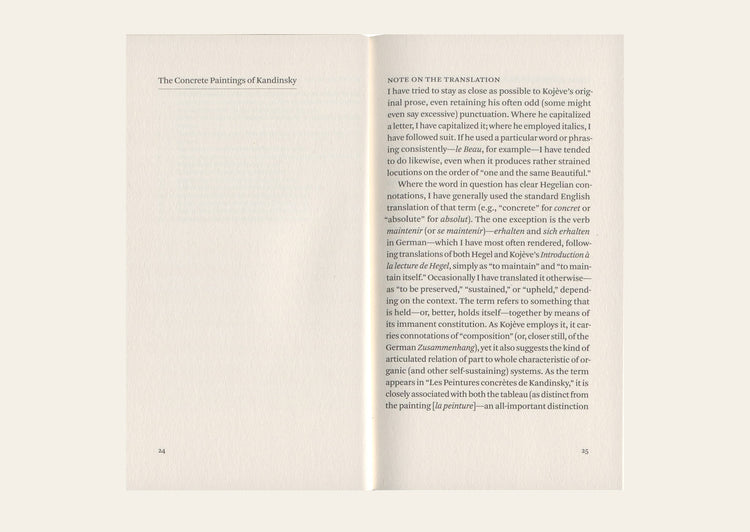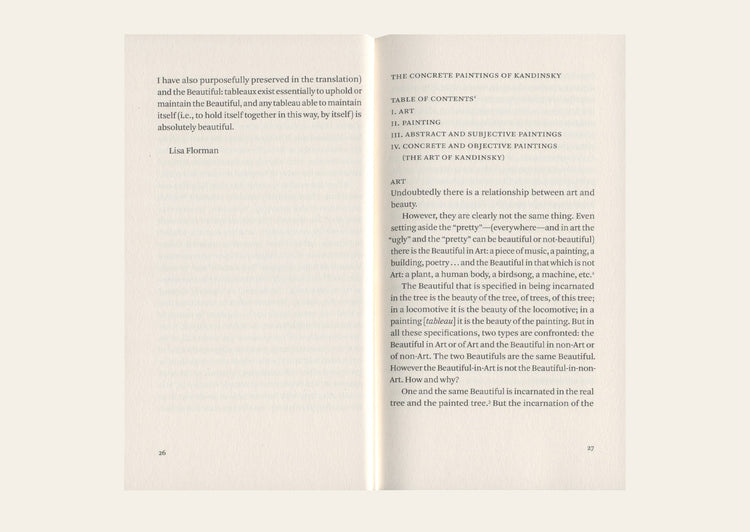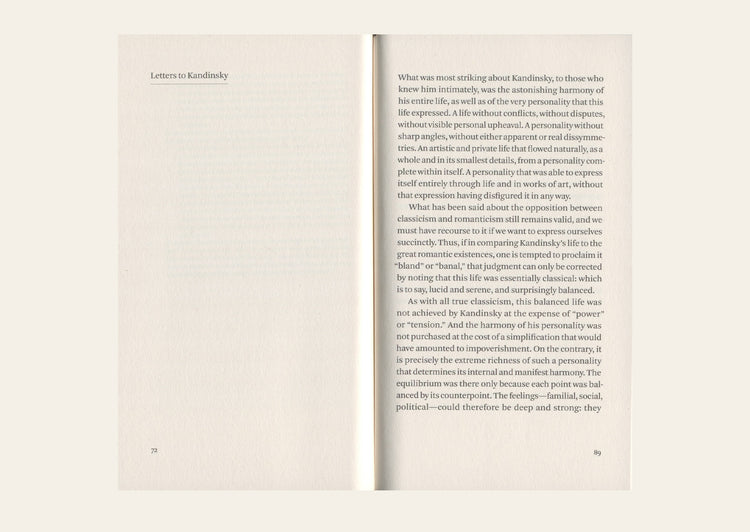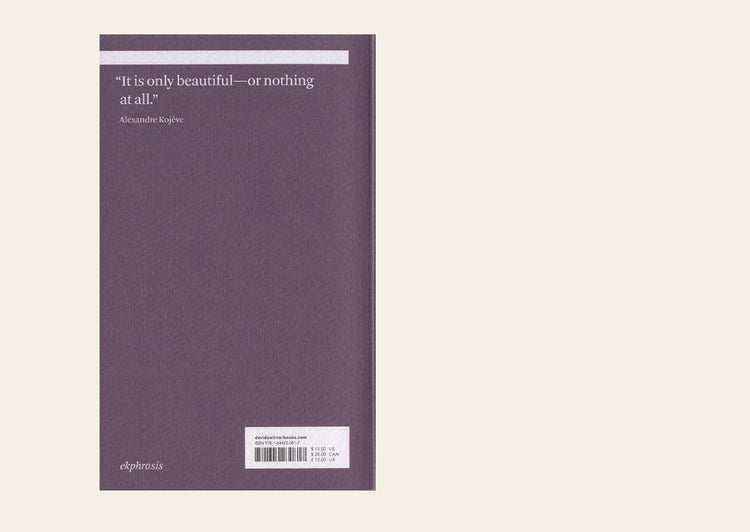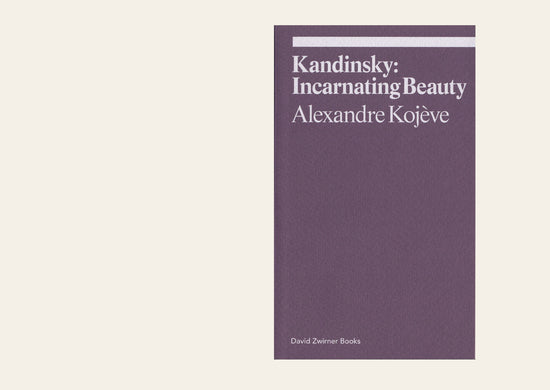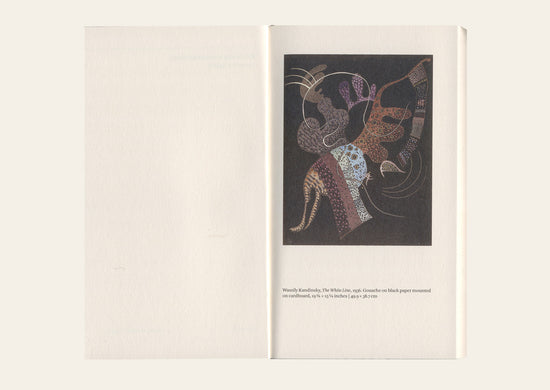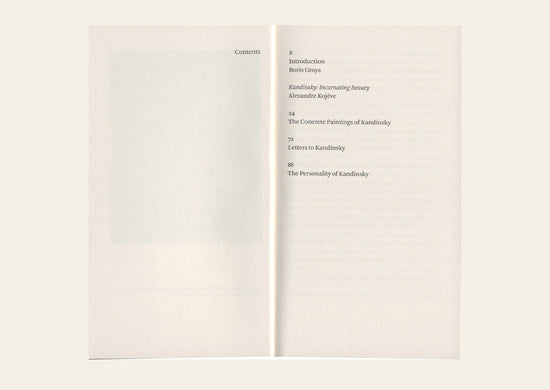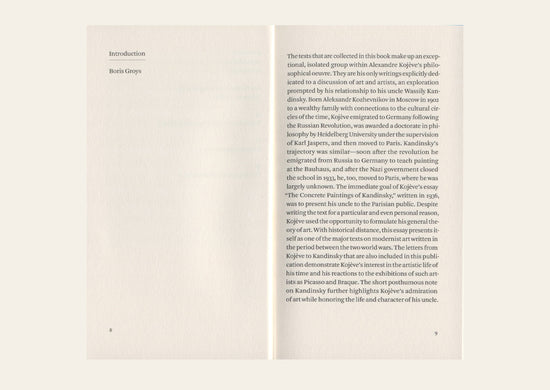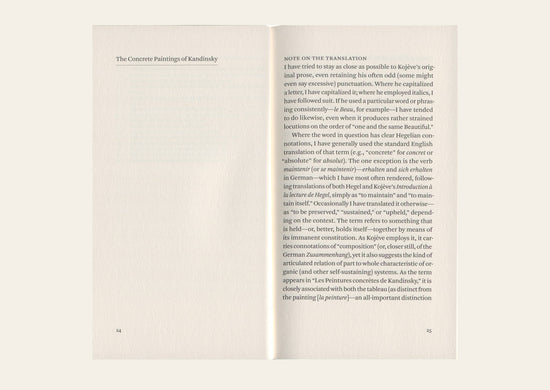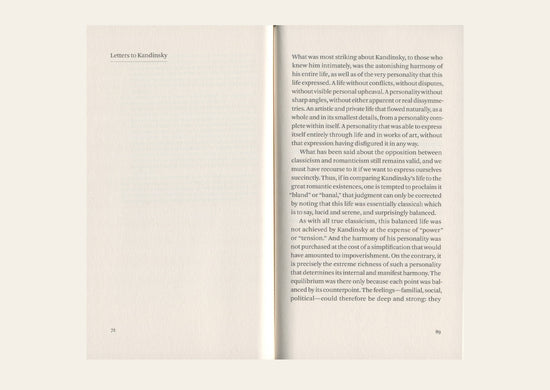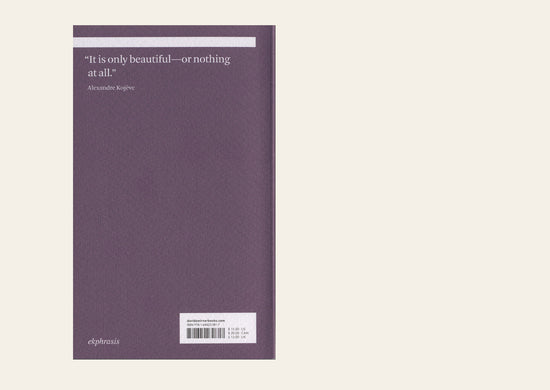Art Theory Painting
Kandinsky: Incarnating Beauty - Alexandre Kojève
"The painter who paints a beautiful tree does not paint the tree, but the beauty of the tree, the Beautiful in the tree or as tree: he neglects everything in the tree except its beauty, that is to say the Beautiful in it, and if he is not able to represent the Beautiful of the tree, he is not able to paint the tree, to make a tableau: he only dirties (colors) a surface.
Art is thus the art of extracting the Beautiful from its concrete incarnation, from this "other thing" which is - "also" - beautiful, and of preserving it [et de le maintenir] in it purity."
A compilation of esoteric musings, Kandinsky: Incarnating Beauty explores Alexandre Kojève’s philosophical approach to the relationship between art and beauty.
A teacher to Jacques Lacan, André Breton, and Albert Camus, Kojève defined art as the act of extracting the beautiful from objective reality. His poetic text, “The Concrete Paintings of Kandinsky,” endorses nonrepresentational art as uniquely manifesting beauty. Taking the paintings of his renowned uncle, Wassily Kandinsky, as his inspiration, Kojève suggests that in creating (rather than replicating) beauty, the paintings are themselves complete universes as concrete as the natural world. Kojève’s text considers the utility and necessity of beauty in life, and ultimately poses the involuted question: What is beauty?
Including personal letters between Kandinsky and his nephew, this book further elaborates the unique relationship between artist and philosopher. An introduction by Boris Groys contextualizes Kojève’s life and writings.
Introduction by Boris Groys
David Zwirner Books, 2022
English
Softcover, 96 pages
108mm x 178mm
- Regular price
- AUD 22.00
- Regular price
-
- Sale price
- AUD 22.00
- Unit price
- per
Couldn't load pickup availability
Item added to your cart
